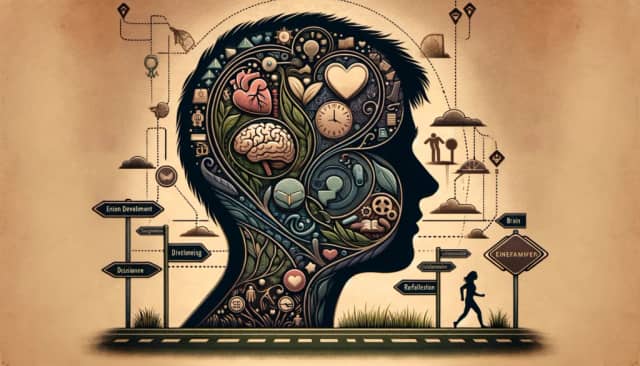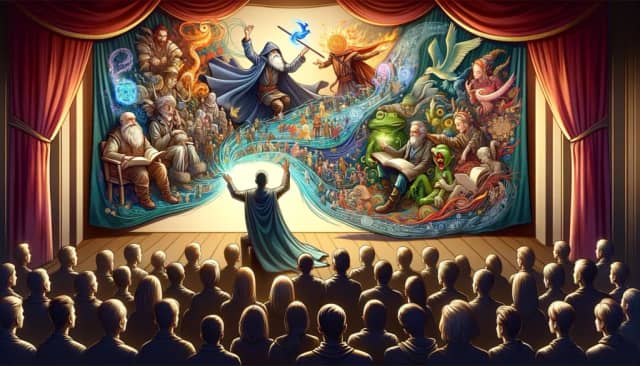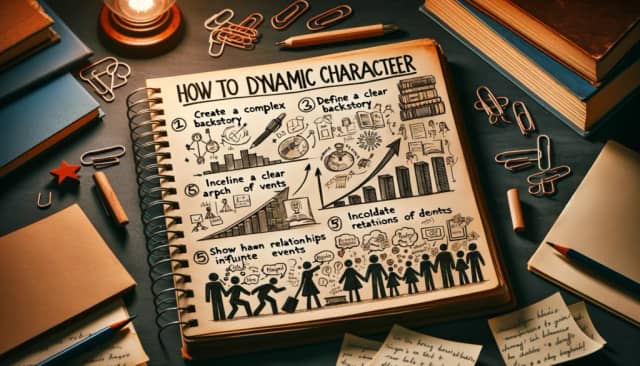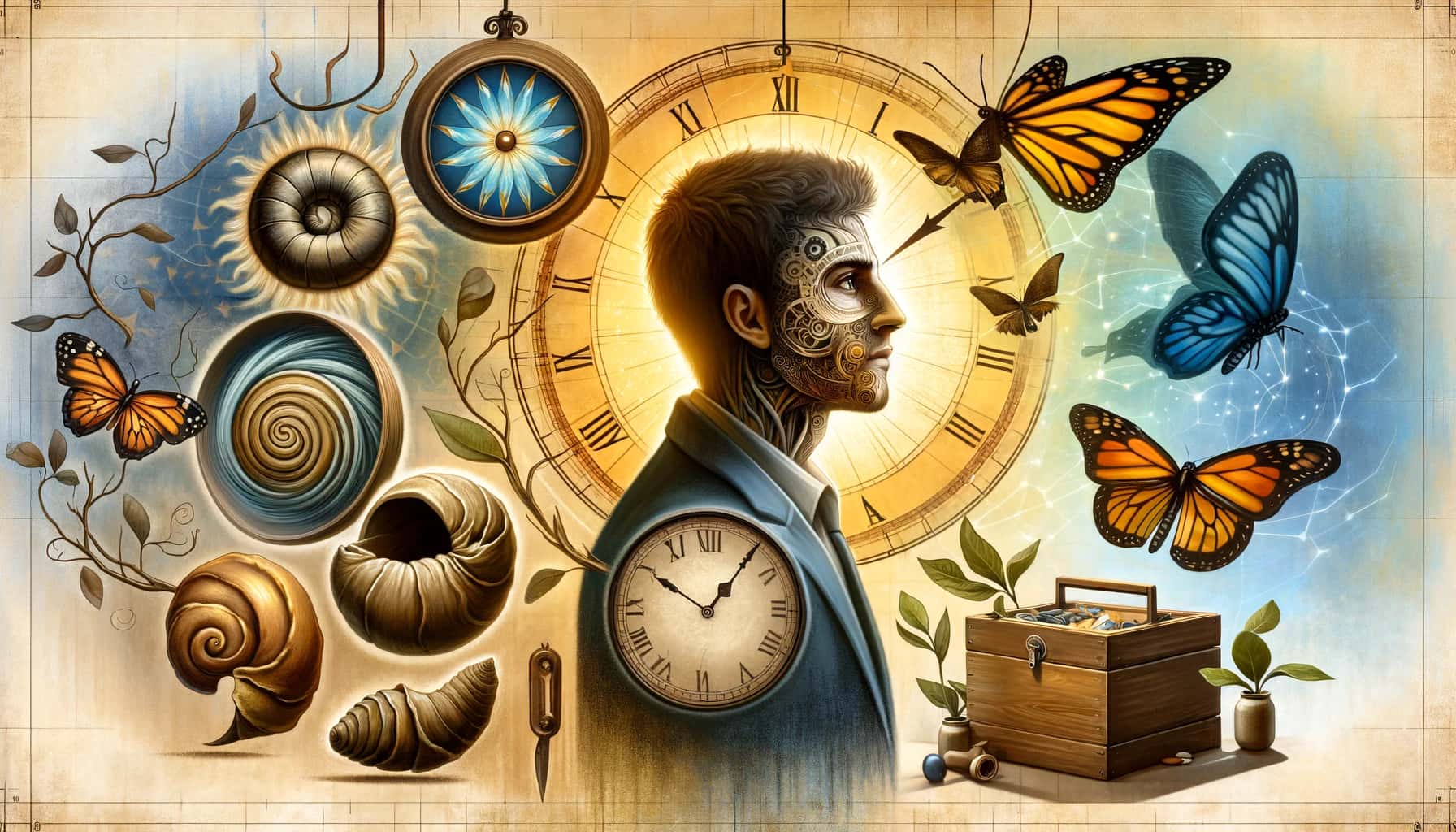Table of Contents
Have you ever wondered what does dynamic character mean in the world of storytelling? Understanding this concept can enrich your appreciation of stories and characters that resonate with us.
Dynamic characters are the essence of compelling storytelling. They’re the ones who experience significant changes throughout the plot, making their journey intriguing and relatable. This evolution is not just about facing challenges but how these experiences reshape them as a whole.
As we delve deeper into this topic, we’ll learn why these characters play a pivotal role in making stories memorable and impactful.
What Does Dynamic Character Mean?

So far, we’re learned what is first person perspective, third person omniscient and third person limited, but what is a dynamic character?
When we talk about what does dynamic character mean, we’re looking into the heart of what makes stories come alive. A dynamic character is someone who undergoes significant internal changes throughout a story.
These changes are often the result of facing various challenges, gaining new experiences, or interacting with other characters in meaningful ways.
Think of it like this: if a character starts off shy and unsure of themselves but ends the story with confidence and a strong sense of identity, they’ve shown dynamic growth.
This transformation isn’t just for show. It’s deeply rooted in the events of the story and the interactions they have with the world around them.
The beauty of a dynamic character lies in their evolution. They adapt, learn, and sometimes even completely change their viewpoints. This is about how their experiences affect their core beliefs and actions. It’s this journey of change that captivates us, making the characters feel real and relatable.
Signs of a Dynamic Character

Here are some key signs that you’re witnessing a dynamic character in action:
One of the clearest signs of a dynamic character is a shift in their worldview. This could be a change in beliefs, values, or attitudes towards life. Maybe our character starts with a cynical outlook but, through various trials and revelations, adopts a more hopeful stance.
This evolution in perspective is often sparked by critical events that challenge their previous beliefs.
Next is growth in personal relationships. Watch how a character’s relationships evolve throughout the story.
A dynamic character might mend a strained relationship, learn to trust, or even let go of toxic connections. This growth reflects their changing understanding of themselves and others.
It’s not just about the relationships themselves but how these interactions contribute to the character’s personal development.
A dynamic character’s objectives can also transform as the story progresses. Perhaps they begin with a single-minded pursuit of success or revenge, only to find deeper meaning in connection, learning, or personal peace.
This shift in goals signifies a profound internal change, as their experiences reframe what’s truly important to them.
Pay attention to how a character’s emotional responses evolve. A character who learns to face their fears, express their feelings, or overcome grief is showcasing dynamic traits.
This emotional journey is a testament to their growth and adaptability, making them more layered and compelling.
Finally, a dynamic character may also undergo significant changes in their moral or ethical stance. This could be a realization of past wrongs, a decision to stand up for what’s right, or a shift from self-centeredness to altruism.
Such evolution highlights the character’s capacity for reflection and change, marking them as truly dynamic.
Recognizing these signs in a character not only enhances the reading or viewing experience but also invites us to reflect on our own capacity for change and growth.
Why Dynamic Characters are Important in Storytelling

Dynamic characters are the lifeblood of storytelling, serving as the bridge between a story and its audience.
Let’s explore why these characters are so crucial in crafting narratives that resonate and stick with us long after the story ends.
First and foremost, dynamic characters keep us engaged. As they navigate challenges, evolve, and grow, we find ourselves rooting for them, sharing in their defeats and triumphs.
This emotional investment is what turns a simple story into an experience. We’re not just observers; we’re emotionally tied to the character’s journey, eager to see where it leads.
Moreover, dynamic characters mirror the complexity of real human experience. Their growth, struggles, and victories reflect our own, making the story more relatable.
Through their journeys, we see our challenges, our potential for change, and our resilience. This connection not only makes the story more engaging but also offers us insights into our behavior and choices.
The evolution of dynamic characters is often tightly woven with the plot’s development. Their decisions, influenced by their growth, propel the story forward, introducing new conflicts and resolutions.
This interplay between character development and plot progression ensures that the story maintains momentum and remains unpredictable and compelling.
Next, dynamic characters are essential in exploring and reinforcing the story’s themes. Their journeys highlight the narrative’s messages, whether it’s about love, loss, courage, or redemption.
Through their eyes, the themes are not just stated but experienced, giving them depth and resonance.
Incorporating dynamic characters allows for a diversity of perspectives and experiences within storytelling. Each character’s unique journey of change and growth broadens the narrative, making it more inclusive of various human experiences.
This diversity enriches the story, making it more comprehensive and appealing to a wider audience.
In essence, dynamic characters are the heartbeat of a narrative, bringing it to life through their complexities and transformations.
They make stories not just something to consume but something to live through and reflect upon, highlighting the power of storytelling in understanding ourselves and the world around us.
Examples of Dynamic Characters in Literature

Here are a few classic examples that stand out for their vivid journeys of change:
- Elizabeth Bennet in “Pride and Prejudice” by Jane Austen – Elizabeth Bennet is a quintessential dynamic character whose prejudices and judgments evolve throughout the novel. Initially, she prides herself on her discernment but often lets her biases cloud her true understanding of others, notably Mr. Darcy. Through various trials and revelations, Elizabeth learns to look beyond first impressions and acknowledges her misjudgments, leading to personal growth and a deeper, more genuine connection with Mr. Darcy.
- Ebenezer Scrooge in “A Christmas Carol” by Charles Dickens – Ebenezer Scrooge’s transformation is perhaps one of the most dramatic in literature. Beginning as a miserly, bitter old man, Scrooge is indifferent to the plight of those around him. However, through supernatural interventions showing him the past, present, and future, Scrooge awakens to the joy of compassion, generosity, and community. His journey from cold-hearted miser to benevolent figure underscores the potential for redemption and change.
- Jay Gatsby in “The Great Gatsby” by F. Scott Fitzgerald – Jay Gatsby is a more complex example of a dynamic character. His change is less about personal growth and more about the revelation of his character to the reader. Initially presented as a mysterious and affluent playboy, Gatsby’s layers are gradually peeled back to reveal the depth of his love for Daisy and the lengths he has gone to win her back. His tragic end emphasizes the destructive nature of obsession and the impossibility of recapturing the past.
- Harry Potter in “The Harry Potter Series” by J.K. Rowling – Over the course of seven books, Harry Potter grows from an innocent, mistreated boy into a courageous and selfless young man. Faced with the truth about his past and his destiny to confront Lord Voldemort, Harry’s journey is marked by loss, love, and the fight against injustice. His growth into a leader who values friendship, love, and sacrifice illustrates the complexities of growing up and the importance of choices in defining who we become.
- Jane Eyre in “Jane Eyre” by Charlotte Brontë – Jane Eyre’s growth from a mistreated orphan to an independent and strong-willed woman is a testament to her resilience and integrity. Throughout the novel, Jane faces numerous challenges that test her morals and self-respect. Her refusal to settle for less than she deserves, even when it means leaving the man she loves, exemplifies her development into a character of strong principles and self-worth.
How to Write Dynamic Characters

Creating dynamic characters is a vital skill for any writer looking to craft stories that resonate with the audience. Here are some practical tips to help you breathe life into your characters, ensuring they captivate readers from start to finish:
- Start With a Clear Character Arc – Before you dive into writing, outline your character’s journey. What changes do they need to undergo? What lessons will they learn? A clear arc sets the stage for your character’s development, guiding their actions and decisions throughout the story.
- Give Them Flaws and Strengths – Dynamic characters are complex and layered, possessing both strengths and flaws. These traits not only make your character more relatable but also provide material for growth and conflict. Consider how your character’s weaknesses might be challenged and what strengths will emerge as they evolve.
- Place Them in Challenging Situations – Growth comes from overcoming obstacles. Design situations that specifically challenge your character’s flaws, beliefs, or fears. These trials are opportunities for your character to learn, adapt, and change, propelling their development forward.
- Show Change Through Actions and Decisions – Show your character’s growth by how their actions and decisions change over time. Early in the story, they might make choices based on fear or ignorance. As they grow, their choices should reflect their new insights and values. This evolution in decision-making is a powerful way to demonstrate character development.
- Use Relationships as Mirrors – Characters often grow through their relationships with others. These interactions can mirror back the character’s own flaws or strengths, prompting them to change. Incorporate relationships that challenge your character, offer them new perspectives, or push them out of their comfort zone.
- Reflect Internal Changes Externally – As your character undergoes internal changes, consider how these might be reflected in their external world. Changes in behavior, appearance, or how other characters perceive them can underscore their development. This alignment of internal and external change enhances the believability of their transformation.
- Allow Setbacks – Growth is rarely linear. Allowing your character to face setbacks or relapse into old habits adds realism to their development. These moments can deepen the character’s arc and make their eventual growth more satisfying.
- Keep the Change Consistent – While characters should evolve, their core essence usually remains the same. Ensure that changes are consistent with the character’s fundamental nature. This consistency prevents the character from feeling disjointed or unrecognizable by the end of the story.
Crafting dynamic characters requires thought, care, and a bit of creativity. By focusing on these aspects of character development, writers can create memorable characters who engage readers’ emotions and imaginations, making their stories linger long after the last page is turned.
Conclusion
Understanding what does dynamic character mean is key to appreciating the depth and evolution within storytelling. These characters embody change, reflecting the complex journey of growth that mirrors our own experiences. Through their developments, stories gain emotional depth, making the narratives more engaging and relatable.
Dynamic characters are not just a storytelling device; they are the heart and soul of a narrative, offering insights into the human condition. Their journeys of change challenge us to reflect on our own lives, encouraging us to consider our paths of personal growth and transformation.
FAQ
What is an example of character dynamics?
An example of character dynamics is Elizabeth Bennet in “Pride and Prejudice.” Her journey from prejudice to understanding and love illustrates how personal growth and relationships influence a character’s evolution, showcasing the depth of dynamic character development.
What is a static character example?
A static character example is Sherlock Holmes in Arthur Conan Doyle’s stories. Despite facing various mysteries and challenges, Holmes’ brilliant, analytical nature and personality remain constant throughout, showcasing his role as a static character who does not undergo significant internal changes.
Who would be a dynamic character?
A dynamic character could be Simba from “The Lion King.” He evolves from a carefree cub into a responsible king, learning lessons about responsibility, courage, and self-identity. His journey exemplifies significant personal growth and change, making him a classic example of a dynamic character.
Is Shrek a dynamic character?
Yes, Shrek is a dynamic character. Throughout the “Shrek” series, he transforms from a solitary, grumpy ogre to a caring friend, husband, and father. His experiences and relationships, particularly with Donkey and Fiona, significantly change his outlook on life and relationships.
How do you know if a character is dynamic?
You know a character is dynamic if they undergo significant internal changes throughout the story, such as shifts in beliefs, attitudes, or behaviors. These changes are usually driven by the plot’s events and the character’s experiences and relationships, leading to personal growth or transformation.
What is a flat character?
A flat character is one-dimensional, lacking complex emotions, motivations, and development. They often serve a specific purpose or role within the story, such as a stereotype or archetype, and do not undergo significant change or growth throughout the narrative.



